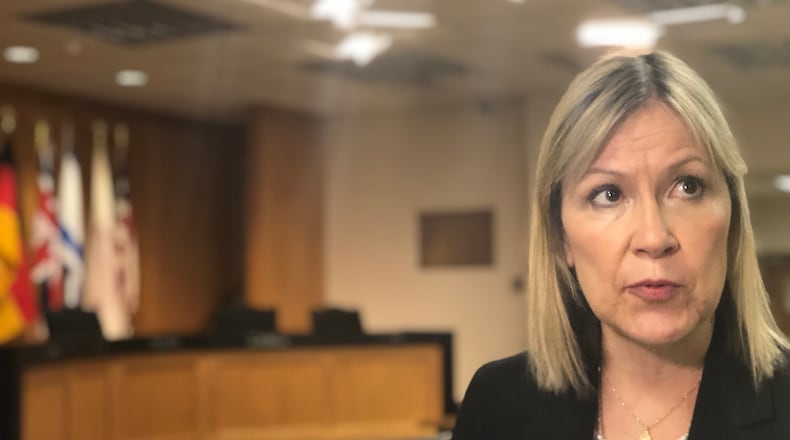The city is still waiting for final U.S. Department of the Treasury guidance about how rescue funds can be used, but it is developing a recovery plan that will consider community input, said Dianne Shannon, Dayton’s director of procurement, management and budget.
“I think this is all very good news,” Dayton Mayor Nan Whaley said earlier this month. “A lot of this work couldn’t be done without the rescue plan.”
On Monday, the city published a link to a survey on its Facebook page where community members can provide feedback on how they would like to see Dayton’s American Rescue Plan Act dollars spent.
The survey, on the city’s website www.DaytonOhio.gov, asks people to rank priorities like demolition and blight removal, sidewalk improvements and green space and outdoor amenities such as playgrounds and parks.
Other priority options include financial support for “Black and brown” businesses or support for new or expanding small businesses in the restaurant and retail sectors and neighborhood business districts.
Survey-takers also are asked how much they prioritize investments in public safety, crime deterrence, housing stability and support for economic sectors impacted by COVID-19.
Earlier this month, Dayton leaders approved amending the city’s appropriations for a second time this year, increasing the total budget by 1.7%, or $12.3 million, Shannon said.
The first revised appropriation in May accepted, authorized and established a fund for the first of two rescue plan payments, Shannon said.
The second revised appropriation earlier this month was the city’s usual June revision, Shannon said, though it was larger than usual. She said that’s because it included the reinstatement of safety forces recruit classes, departmental reorganizations and the reestablishment of some positions.
“These adjustments were made possible by the receipt of grant funds, such as ARPA, along with higher than projected revenues,” she said.
A fire recruit class in August will cost about $703,500, Shannon said, and a police recruit class beginning in November will cost about $462,000.
Fire and police also will have classes next year as well.
The revised appropriation also included about $279,500 in funding for some police reform expenses, like a new mediation specialist position, a new community appeals board and a contract to help establish an alternative police response model.
The city also has decided to reorganize some departments and reestablish a community engagement division, which carried some additional expenses, Shannon said.
The Human Relations Council has been restructured, which included reinstating some positions and adding others, she said, and the city also reestablished some recreation position.
Some of the federal aid is expected to go toward revenue replacement to help offset losses stemming from the coronavirus crisis.
The city projected a first year revenue loss of about $16 million, but that was an early estimate and it’s still not clear how the Treasury will allow the rescue funds to be used, staff said.
The city earlier this year decided to provide $2,000 lump sum payments to its employees who did not receive pay increases in 2021, officials said.
About the Author



